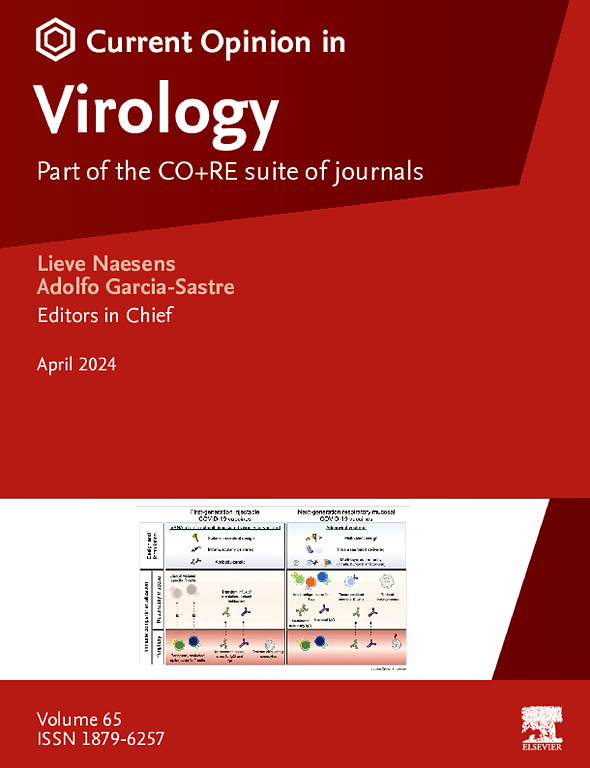抗病毒先天免疫的蛋白质组学分析
IF 5.7
2区 医学
Q1 VIROLOGY
引用次数: 0
摘要
宿主细胞检测和限制感染病毒的能力取决于一系列细胞自主抗病毒效应物和先天免疫受体,它们可以在组织和生物体水平上触发炎症过程。蛋白质丰度、亚细胞定位、翻译后修饰以及与其他生物分子的相互作用的动态变化控制着这些过程。因此,蛋白质组学是发现宿主抗病毒免疫新机制的理想实验工具。通过对病毒免疫逃避策略的系统分析,可以收集到关于宿主和病毒的额外信息。在这篇综述中,我们总结了蛋白质组学技术的最新进展及其在抗病毒先天免疫中的应用。本文章由计算机程序翻译,如有差异,请以英文原文为准。
Proteomic analysis of antiviral innate immunity
The capacity of host cells to detect and restrict an infecting virus rests on an array of cell-autonomous antiviral effectors and innate immune receptors that can trigger inflammatory processes at tissue and organismal levels. Dynamic changes in protein abundance, subcellular localisation, post-translational modifications and interactions with other biomolecules govern these processes. Proteomics is therefore an ideal experimental tool to discover novel mechanisms of host antiviral immunity. Additional information can be gleaned both about host and virus by systematic analysis of viral immune evasion strategies. In this review, we summarise recent advances in proteomic technologies and their application to antiviral innate immunity.
求助全文
通过发布文献求助,成功后即可免费获取论文全文。
去求助
来源期刊

Current opinion in virology
VIROLOGY-
CiteScore
11.80
自引率
5.10%
发文量
76
审稿时长
83 days
期刊介绍:
Current Opinion in Virology (COVIRO) is a systematic review journal that aims to provide specialists with a unique and educational platform to keep up to date with the expanding volume of information published in the field of virology. It publishes 6 issues per year covering the following 11 sections, each of which is reviewed once a year: Emerging viruses: interspecies transmission; Viral immunology; Viral pathogenesis; Preventive and therapeutic vaccines; Antiviral strategies; Virus structure and expression; Animal models for viral diseases; Engineering for viral resistance; Viruses and cancer; Virus vector interactions. There is also a section that changes every year to reflect hot topics in the field.
 求助内容:
求助内容: 应助结果提醒方式:
应助结果提醒方式:


